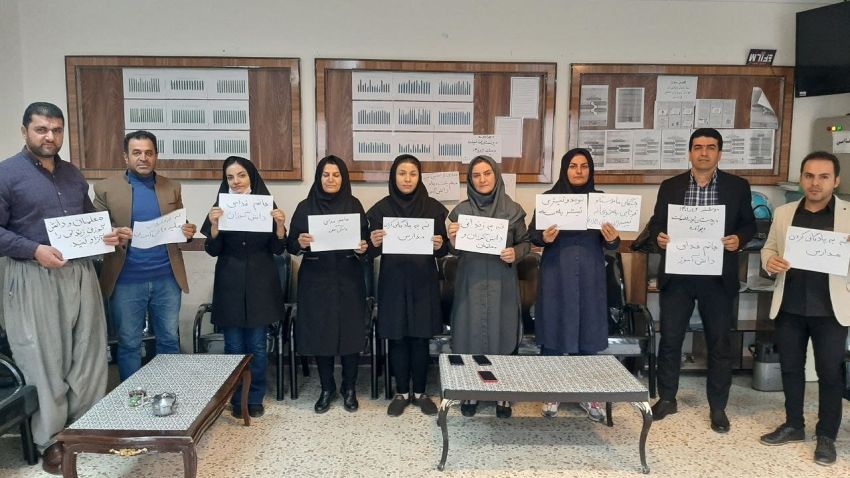
Protests entered their second month in Iran, following the September 16 death of 22-year-old Kurdish-Iranian woman Jîna (Mahsa) Amini, while in the custody of the so-called “morality police”. Amini — who was visiting the capital, Tehran, from her hometown in Iran’s Kurdish region — was arrested for not wearing her head scarf in accordance with the strict dress code for women.
Her death sparked a mass protest movement that quickly spread nationally. International solidarity demonstrations continue around the world. In Berlin, about 80,000 people took to the streets on October 22.
Iranian teachers staged a two-day strike and sit in on October 24, as anti-government sentiment continues to grow. Trade unions also launched strikes in the food and oil industries.
The Co-ordinating Council of Teachers Syndicates vowed to “continue our protest until the people’s right to protest is recognised, all pupils are unconditionally freed and return to schools, the system stops killing the people and children, and stops answering the people’s rightful demands with bullets”.
According to Iranian labour solidarity group Shahrokh Zamani Action Campaign (SZAC), “As workers’ strikes spread in many parts of Iran — particularly in the oil, gas and petrochemical industry of Khuzestan — the regime has once again stepped-up repression to break these struggles.
“So far over 500 contract workers in the oil and gas industries of Asaluyeh and Abadan have been arrested and over 100 have been sacked.
Intimidation and divisive tactics, such as offering inducements to scabs, are being used to try to undermine the strikes, and authorities continue to shut down the internet and filter social media sites to prevent news of the strikes and protests from reaching other parts of the country.
“Despite all these measures, the strike wave continues to spread,” said SZAC.
“One of the most significant developments was on October 12th, when the oil, gas and petrochemical strikes escalated, with workers in various phases and sites of the Asaluyeh gas complex going on strike and blocking the Asaluyeh-Kangan motorway.
“The strike information we have received includes the following plants (although it is probably incomplete because of the internet and social media curbs): Asaluyeh petrochemicals; Abadan refinery; Ney Steel; Shadgan Steel; South Pars Central workshop; Mahshahr pipe manufacturing; Kian Tyre (in Tehran province); Haft Tappeh Sugar Cane Complex; Lamerd Aluminium works (in Fars province, southern Iran); and tanker drivers in the oil and petrochemical industry.”
Women across the country continue to protest the regime by refusing to wear headscarves. Protests continue on university and school campuses.
According to the Oslo-based NGO Iran Human Rights (IHRNGO), as at October 25, at least 234 people, including 29 children, have been killed in the uprising.
IHRNGO said authorities are attempting to cover up the killings. “Returning bodies is made contingent on families promising to stay silent or confirming the false causes of death cited by the Forensic Medical Organisation on the death certificates," it said. "In some cases, the slain were buried without families being notified and far from their residence.”
Protesters have been killed in 21 provinces, with the most reported in Sistan and Baluchistan, Mazandaran, Tehran, Gilan and Kurdistan.